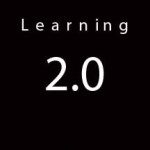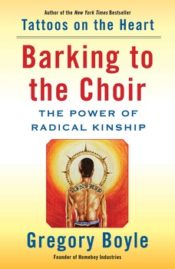Learning 2.0.net: A Way to Create Winners and Increase the Capacity of Public Education
Posted on | January 24, 2012 | Comments Off on Learning 2.0.net: A Way to Create Winners and Increase the Capacity of Public Education
Over the last two years, I have been researching and writing about Learning 2.0, the next full scale version of public education.
I started the research to find a way through the political gridlock of education politics, not because I considered myself an expert in learning theory or pedagogical practice. I think I have.
In a report to the John Randolph and Dora Haynes Foundation, which supported my research, I called for the creation of Learning 2.0.net, a public venture that would change how students learn, how teachers work, and how students gain credit for what they do.
Learning 2.0.net is both possible and necessary because the leading schools are departing from the century-old industrial batch-processing model in two ways. First, they use a form of flexible specialization, a means of production capable of responding to the needs of individual students quickly and economically. Second, they rely on peer production, social sharing and exchange to build things of value.
In the growing world of peer production, individuals cooperate to create goods and services without the intervention of firms or government agencies, although they may be enabled by them. Individual self-identification rather than management authority determines the division of labor in ventures, such as Moodle, Wikipedia or the virtual reality system Second Life. Peer production is possible because the Internet is different from other technologies because it passes the power of production and the ability to collaborate in production into the hands of individuals. It does not mean that all the capital necessary to process, store and communicate information is under individual control. That is not necessary. But with a very modest investment, individuals gain the ability to access information, to take from it, rework it and submit it back to the commons.
Learning 2.0.net
The relevant policy question is whether California can feasibly take steps that use the new production system to bring Learning 2.0 into being and to use the new production technology to build the capacity of the state’s education system. I believe it can.
California needs to invest in a learning infrastructure for students, one that uses the new network production technology. Think of it as a combination of Facebook for school, the best computer game you ever saw, and a smart app for your mind. By thinking of the student as the end-user rather than designing educational products that will be attractive to a textbook adoption committee, the state can vastly open up learning to new participants, approaches and ideas.
Learning 2.0.net would contain information necessary for students and their parents to navigate schooling, teaching and tutoring in different modalities and styles, and the ability for students to test their knowledge and gain credit.
For students and their parents, information lights the pathway to college and career. By when should a child be redesignated as English fluent to have a good chance of getting into college? Why are class placement tests at a community college important? At a minimum, students and their parents ought to have on-line access to reliable information about where they are on a pathway, an educational GPS function.
The second part of Learning 2.0.net would offer a variety of learning experiences, or access to them. The number learning applications grows almost hourly. In fact, there is so much learning material on the Internet that Learning 2.0.net should function as an aggregator. Also, it should assist the development of particularly sophisticated applications, social or scientific simulations. And it can be the site for collaborating teachers and students.
The third part of Learning 2.0.net would allow students to take tests and get credit for learning. Students could take tests when they were ready, could pass courses when they were ready, could take tests as formative feedback. Unbundling teaching and testing also allows the whole education system to become more productive. If the financial rewards for school systems were correctly managed, it might also incentivize schools and districts to accelerate learning. And instead of drawing students away from substantive learning, substantive tests would motivate students and place the teacher in the position of a supportive tutor and coach to help them reach their goals.
Creating a Politics of Winners
Learning 2.0.net would change the politics of education in California by changing the way students interact with the tools of learning. By changing the way students and teachers work, it would activate new interests in education, and reshape the interests of well-established parties, such as teacher unions, parents, and school districts. It would activate student and parent expectations of schooling. It would allow teachers to have field trials of new ways of arranging their work without frontally attacking the idea of a class or student-teacher ratios.
No state agency or district would demand its use as a matter of system design. Learning 2.0.net’s growth would come about through practice adoption rather than mandate. Learning 2.0.net allows teacher unions and school districts to embrace technology without forfeiting the students, the revenue they bring to a school district, or the teacher jobs that revenue allows. Students would remain enrolled in their home school and district.
Learning 2.0.net could also serve an important educational laboratory function. All the new modes of learning are in their infancy and they need more of the D(evelopment) part of R&D. Instead of a standard design, California needs many laboratories. It would help preserve a legal commons so that the intellectual property of schooling stays in the public domain. And it would allow attaching school-finance and human-resources politics to productive changes in learning.
And more than anything, Learning 2.0.net would allow existing schools to be winners, politically and educationally.
The full report is available here.
Tags: John and Dora Haynes Foundatiohn





